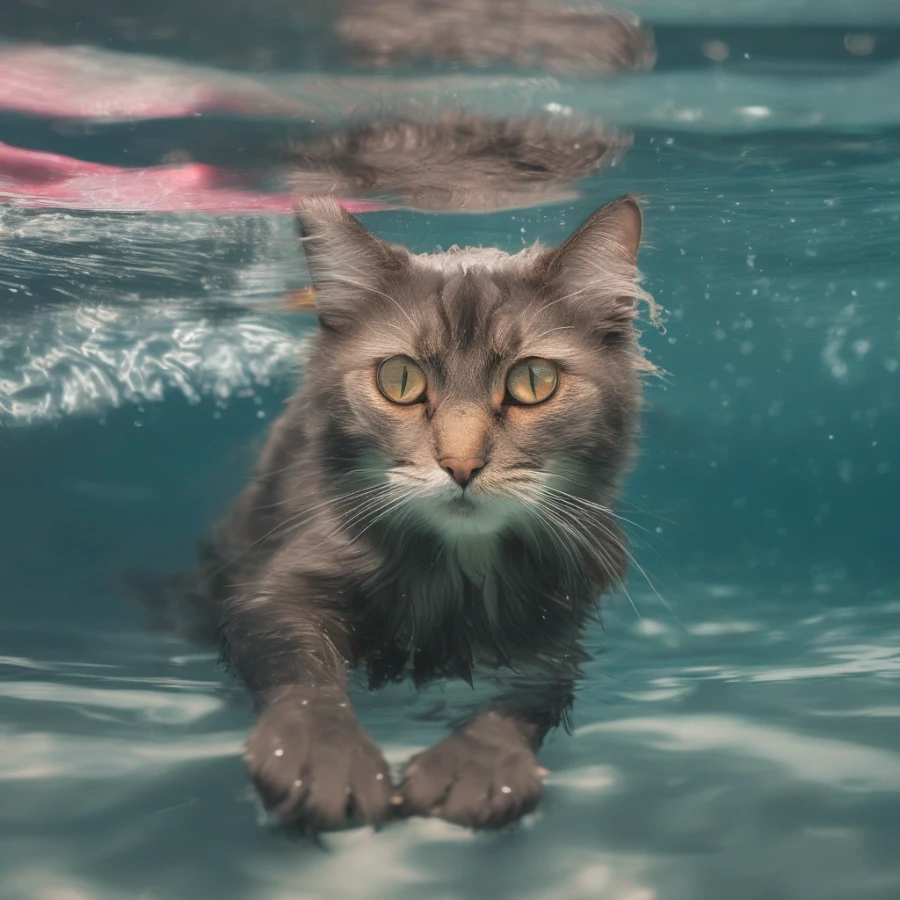Is Palo Santo Safe for Cats? Understanding the Effects of Aromatics on Feline Friends

Published by: Tatsiana Korshik
Time to Read: 3 Min

Palo Santo, with its captivating aroma and cultural significance, has become increasingly popular as a natural aromatic tool for relaxation and spiritual practices. However, if you're a cat owner, you're likely curious about the safety of using Palo Santo around your feline companion. In this comprehensive guide, we'll explore the potential effects of Palo Santo on cats, addressing the concerns and providing you with the information you need to make an informed decision regarding its use in your home while prioritizing your cat's well-being.
Aromatic Compounds: Palo Santo releases aromatic compounds when burned or diffused, producing a fragrant smoke or vapor. Cats have a highly developed sense of smell, and strong scents can potentially overwhelm or irritate their sensitive noses.
Allergic Reactions: Just like humans, cats can also have allergic reactions to certain scents or substances. An allergic response might include skin irritation, watery eyes, or excessive scratching.
Limited Exposure: Keep your cat in a separate, well-ventilated area while using Palo Santo. This reduces their direct exposure to the aromatic compounds.
Closely Monitor: Observe your cat's behavior while Palo Santo is being used. If you notice any signs of discomfort, irritation, or changes in breathing, discontinue use immediately and consult your veterinarian if needed.
Alternative Spaces: Designate a space where you use Palo Santo, and ensure it's off-limits to your cat. This provides a safe zone where your cat won't come into direct contact with the aromatic smoke.
Natural Alternatives: Consider using cat-safe alternatives for aromatics, such as catnip or valerian root, which many cats find soothing and enjoyable without posing health risks.
Consult a Veterinarian: If you're uncertain about using Palo Santo around your cat, consult your veterinarian for personalized advice based on your cat's health and sensitivities.
Conclusion
Palo Santo has its merits as a fragrant tool for relaxation and spiritual practices, but its potential impact on cats cannot be ignored. While it's generally safe for humans, cats have a unique sensitivity to strong aromas, which can potentially lead to respiratory distress or allergic reactions. If you choose to use Palo Santo in your home, prioritize your cat's well-being by practicing caution, limiting exposure, and closely observing their reactions. As responsible cat owners, it's our duty to create an environment that promotes our cats' health and comfort, even when incorporating aromatic elements like Palo Santo into our lives. By being mindful of their sensitivities, we can strike a balance between enjoying aromatics and ensuring our feline friends' safety and happiness.
Palo Santo: A Brief Overview
Palo Santo, meaning "holy wood" in Spanish, is a fragrant wood derived from the Bursera graveolens tree, native to South America. The wood is known for its distinctive scent and has been traditionally used in spiritual rituals, ceremonies, and for its purported wellness benefits, such as relaxation and stress relief.Understanding the Impact on Cats
While Palo Santo is generally considered safe for humans, it's essential to consider its potential effects on our feline companions due to cats' unique sensitivities.Aromatic Compounds: Palo Santo releases aromatic compounds when burned or diffused, producing a fragrant smoke or vapor. Cats have a highly developed sense of smell, and strong scents can potentially overwhelm or irritate their sensitive noses.
Potential Risk Palo Santo for cats
Respiratory Sensitivity: Cats' respiratory systems are delicate, and exposure to strong aromas, including those from essential oils and fragrant woods like Palo Santo, can trigger respiratory distress, sneezing, coughing, or even difficulty breathing.Allergic Reactions: Just like humans, cats can also have allergic reactions to certain scents or substances. An allergic response might include skin irritation, watery eyes, or excessive scratching.
Safe Practices for Using Palo Santo Around Cats
If you're determined to use Palo Santo while ensuring your cat's safety, consider the following practices:Limited Exposure: Keep your cat in a separate, well-ventilated area while using Palo Santo. This reduces their direct exposure to the aromatic compounds.
Closely Monitor: Observe your cat's behavior while Palo Santo is being used. If you notice any signs of discomfort, irritation, or changes in breathing, discontinue use immediately and consult your veterinarian if needed.
Alternative Spaces: Designate a space where you use Palo Santo, and ensure it's off-limits to your cat. This provides a safe zone where your cat won't come into direct contact with the aromatic smoke.
Natural Alternatives: Consider using cat-safe alternatives for aromatics, such as catnip or valerian root, which many cats find soothing and enjoyable without posing health risks.
Consult a Veterinarian: If you're uncertain about using Palo Santo around your cat, consult your veterinarian for personalized advice based on your cat's health and sensitivities.
Conclusion
Palo Santo has its merits as a fragrant tool for relaxation and spiritual practices, but its potential impact on cats cannot be ignored. While it's generally safe for humans, cats have a unique sensitivity to strong aromas, which can potentially lead to respiratory distress or allergic reactions. If you choose to use Palo Santo in your home, prioritize your cat's well-being by practicing caution, limiting exposure, and closely observing their reactions. As responsible cat owners, it's our duty to create an environment that promotes our cats' health and comfort, even when incorporating aromatic elements like Palo Santo into our lives. By being mindful of their sensitivities, we can strike a balance between enjoying aromatics and ensuring our feline friends' safety and happiness.



